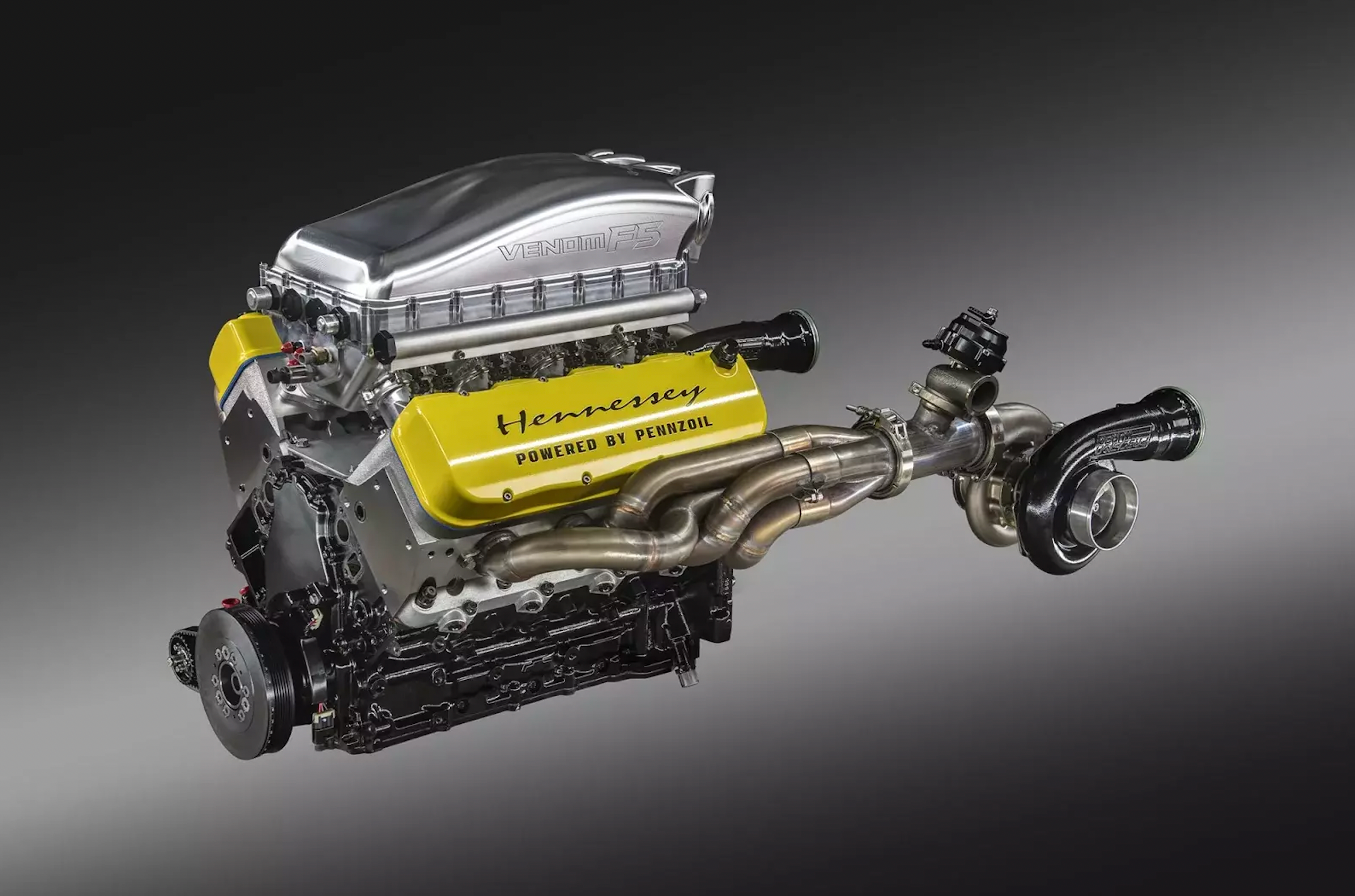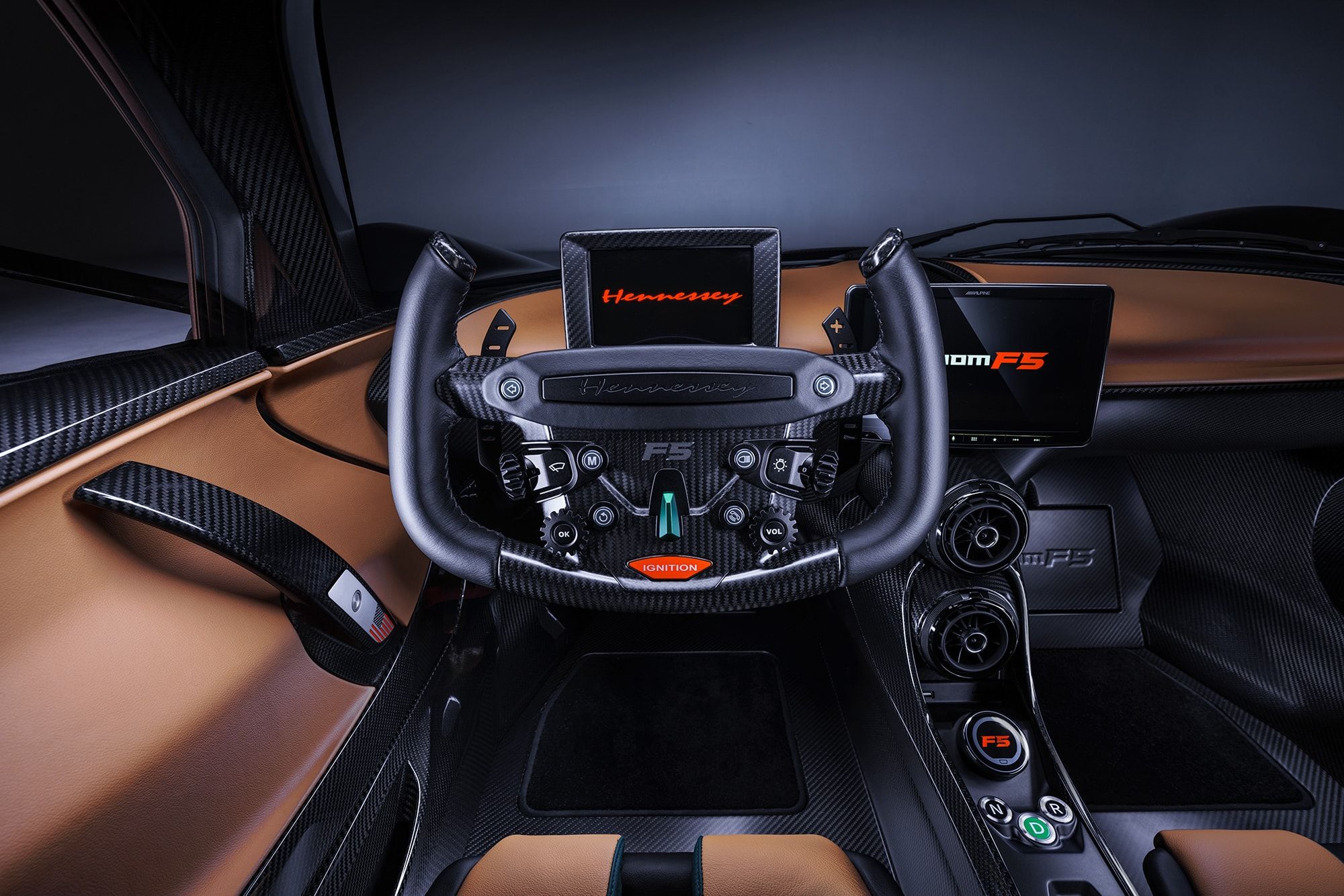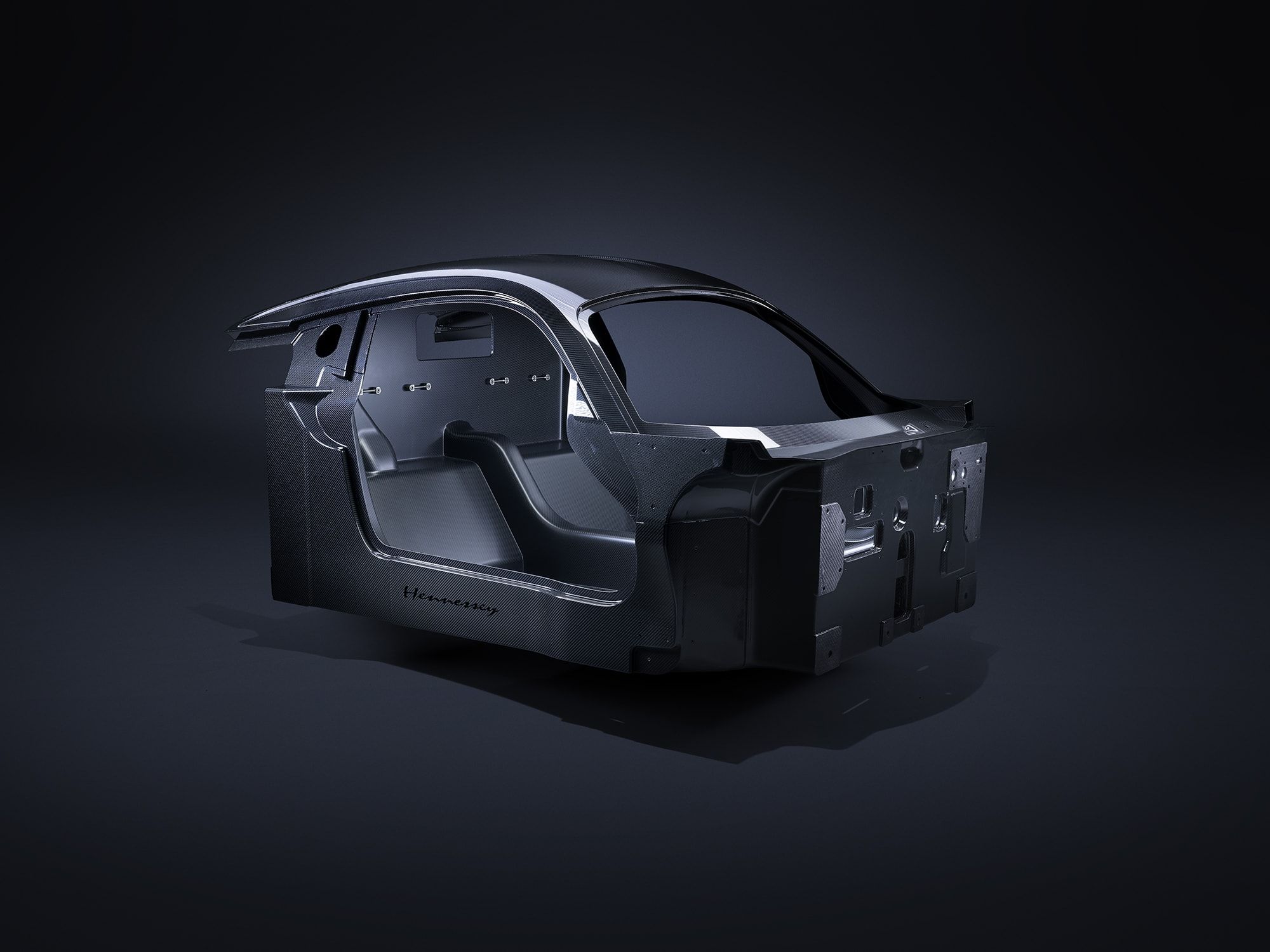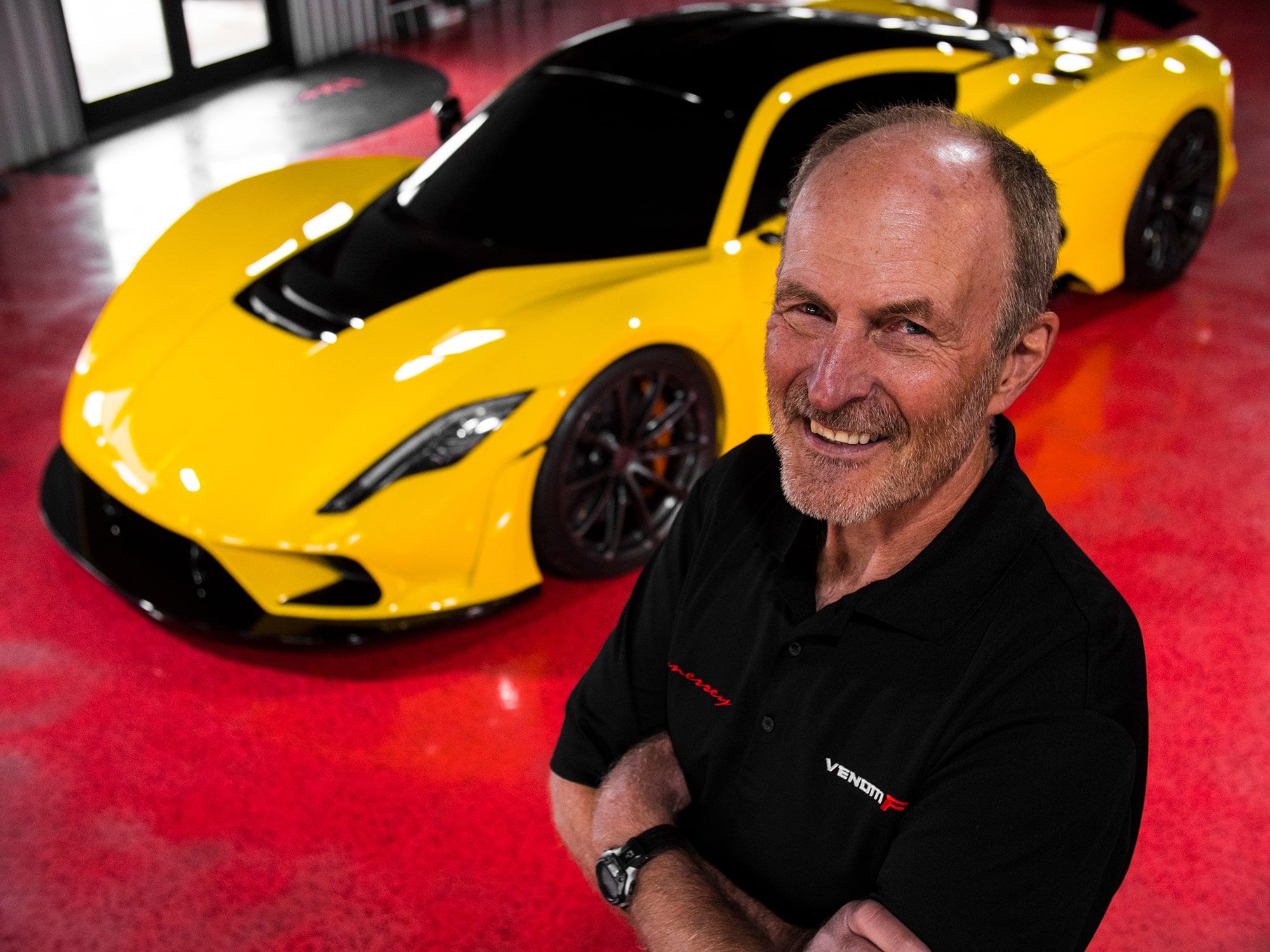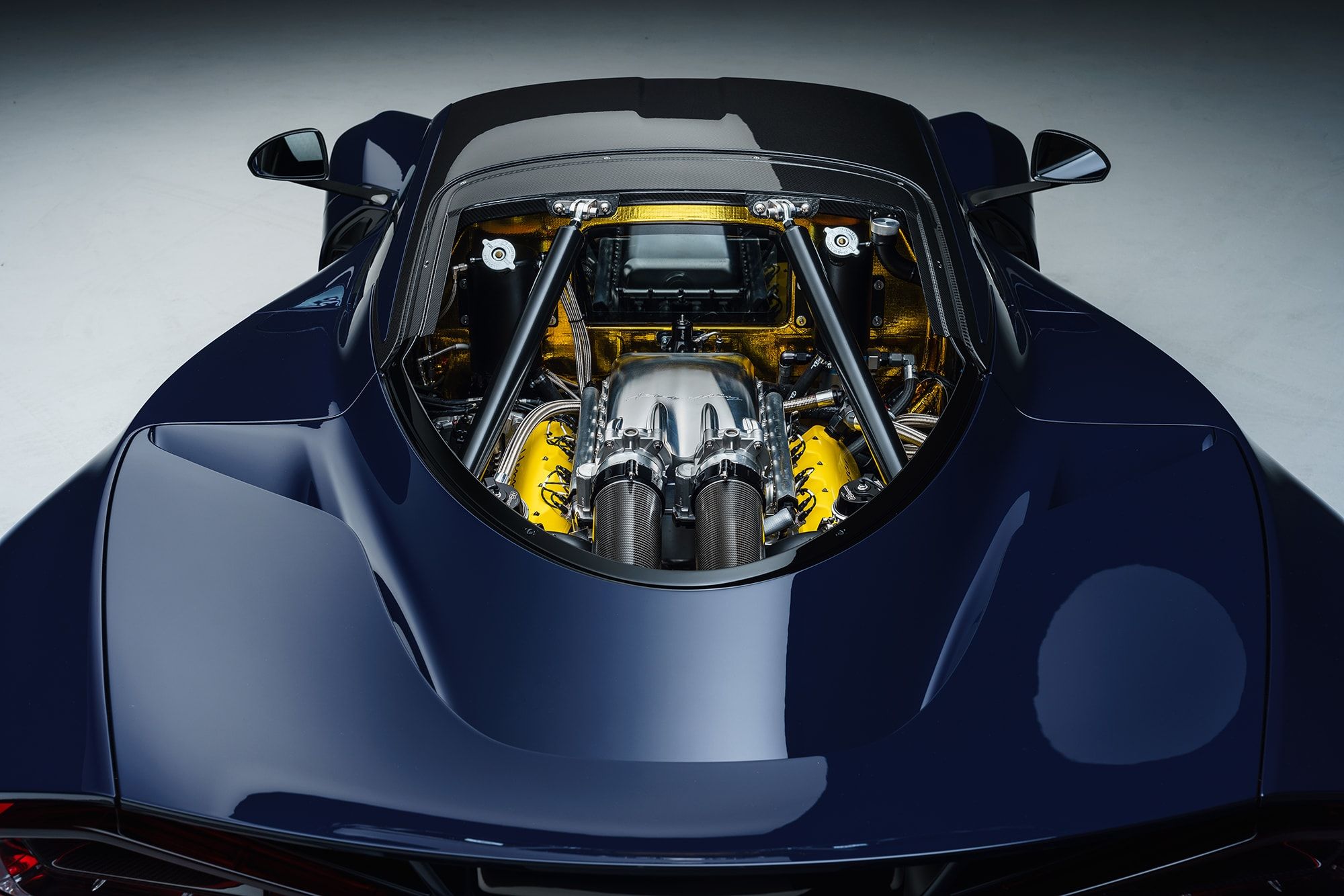Hypercars can get really confusing. They often market themselves on their capabilities - be it with regards to acceleration, tech features, track performance, and who could forget the infamous 300+ mph claims? In the midst of these extremities, a lot of people tend to forget what truly makes any hypercar, well, hyper. Admittedly, Hennessey’s name has gotten caught up in the “claimed” record list, but there is simply so much more to the new Venom F5 than what the speed record shows. So, here's a run-down on what the Hennessey Venom F5 can really do, as well as what makes this vehicle more unique than your average performance car.
It Has Some Staggering Figures
It’s quite obvious that any car of the Venom F5’s caliber would have amazingly large numbers under the hood. However, one quick look at the horsepower and the rest of the pieces should fall into place; with its 6.6-liter TT ‘Fury’ V-8 in the rear, the F5 makes a breathtaking 1,817 horses. To top that off, when the engine is paired with the rest of the car it makes for a combined dry weight of just under 3,000 pounds (1350kg). The result of the combo is a heart-pumping 0-60 time of only 2.6 seconds!
Hennessey Venom F5
|
Engine/Powertrain: |
6.6-liter twin-turbo V-8 |
|---|---|
|
Horsepower: |
1817 HP |
|
Torque: |
1193 lb-ft |
|
Redline: |
8500 RPM |
|
Curb Weight: |
1385 kg (3053 lbs) |
|
0-60 mph: |
2.6 sec |
Money Is Not An Object
Cutting right to the chase here: This car costs $2.1 million.
Yeah, definitely more than a Miata. If you know your hypercars, that figure shouldn’t blow you away. If this is the first you’re hearing of a price tag like this, then welcome to the segment. Disregarding the fact that the published price only covers the run-of-the-mill base Venom F5, the only people who are paying for one of these already know exactly what they want. In normal expensive-car fashion, production of this car is limited to only 24 examples for the coupe (all of which have already been reserved) and 30 for the roadster. That said, we should expect many of these examples to wind up in the hands of trusted car enthusiasts (which also means one will probably crash at a random car event and make headlines in a few years…).
The Key Has Origins at NASA
Let’s go ahead and dream real quick: Upon receiving your brand new, 2-million dollar Hennessey hypercar, you are presented with a giant metal “treasure chest”. Inside that chest lays a jewelry box, and inside that jewelry box lays the key to your car. On the side of that key - you, the wealthy and special new car owner, will find a little metal plate with your Venom’s serial number on it. Of course, nobody would ever think to look for specialty in that little plate, however behind the shiny laser-cut number remains a piece of metal with great American history.
According to YouTuber Doug Demuro, a friend of John Hennessey happens to be a former astronaut. During his time at NASA, the astronaut was gifted small pieces of metal debris blown off space shuttle launches as a commemoration to his work. Naturally, Hennessey wanted his car to include something from space in it, and so a few calls later, the czar managed to source these pieces of history, and now, every Venom F5 key comes with a piece of Space Shuttle metal on it. The key also includes an allen wrench for removing the engine cover. Talk about keeping things unique.
The Whole Interior is Jet-inspired
If you’re going to push a car up to 300 mph, you can’t have distractions. To help achieve this goal, Hennessey made the interior as minimalistic as possible while still retaining an elegant appearance, keeping the concept of “function defines form” in mind. The idea behind the Venom F5’s interior is to make the driver feel like they are piloting a jet, keeping an emphasis on complete visual focus. The only materials inside the car are the ones that need to be there, and the rest of the Venom F5’s “cockpit” is meant to be as lightweight as possible. Also reminiscent of a plane is the seven-inch screen on the steering column, which was designed to mimic the head-up display you would find inside a fighter jet. Naturally, this screen is used for the gauge cluster, which changes in appearance based on the selected driving mode.
The Entire Chassis is Carbon-Fiber
Weighing in at just under 190 pounds (86 kilos), you could bring the Venom F5’s chassis to the gym and somebody there would probably be able to lift it. To achieve Hennessey’s goal of a sub-3000-pound dry weight, the car’s chassis had to be constructed to be as light as humanely possible. Unlike Hennessey’s previous supercar, the Lotus-based Venom GT, the F5’s chassis was built from the ground up, with no first-party basis for the platform. After three years of engineering, the result is a complete carbon-fiber monocoque woven in a herringbone pattern all the way to the center line. Hennessey made sure to show off its work with photos of the tub, and man, it looks good.
It Reaches 186 mph Quicker Than an F1 car
It’s no surprise at this point that the Venom F5 is just straight up fast. However, the true performance really comes into perspective when you begin to compare numbers to the world of racing. Alongside the 0-60 mph time of 2.6 seconds, this bullet of a vehicle can reach 186 mph (300km/h) in just 8.4 seconds! In Formula 1, arguably one of the most prestigious racing championships worldwide, the race cars often never reach 300km/h in under even 10 seconds. Venom F5: 1 – Formula 1 Car: 0.
The Roadster Version is the World’s Fastest Convertible
Yes, there’s a roadster version too, and no, Hennessey did not make any compromises with the design. The hypercar market doesn’t exactly have much room to fit convertibles, especially at the record-breaking level, meaning it won’t be hard for the Venom F5 Roadster to shatter the speed records when it clocks a 300+ mph run down a straight line. Unfortunately, it has not been officially speed tested or published at the time of writing this, but there actually is one promising test run we have seen out of this car.
The Top Speed is Over 300mph
Bit of a disclaimer: the only known evidence as of right now that the Venom F5 can hit 300+ mph is word from Hennessey itself. However, given that a few examples of the car are now in the hands of private consumers, we should expect to see the car’s true speed potential any day now.
We did, although, get a peek at Hennessey’s most recent speed test for the Venom F5 - where the car comfortably hit 271.6 mph before the driver eased off the throttle. Seeing how easy it was for the car to reach that speed, there should be full confidence that the vehicle can also hit the 300-mph mark. It is also notable that Bugatti hit 304 mph in their non-production Chiron Super Sport, except that was only in one direction. The requirement for the Guinness World Record is that the vehicle in question must be able to set a record speed in both directions, as not to take advantage of any tailwind. Chances are likely that Hennessey is waiting until it knows it can crack 300mph in two directions, saving up for both the new record and an official demonstration at the same time.
The Chief Engineer is a Racing Driver Himself
In the world of performance cars, it is common to find many engineers with experience in the driving field. What is not common is to find an engineer who’s broken a record himself. John Heinricy, better known as “The Heinrocket”, was appointed by the Hennessey development team as Chief Engineer in 2018. With a history of working at GM for 38 years, Heinricy developed a notable racing background including having driven the first factory-backed Corvette racecar to the 1999 Rolex 24 at Daytona. He’s also known for setting a record lap time around the Nürburgring in a production four-door sedan with the original Cadillac CTS-V. If there was anyone who was going to help Hennessey reach 300 mph, it was The Heinrocket.
The Engine Bay is Surrounded by Gold
To wrap up the list of specialties, what better than to go back in time and remind everyone of the famous McLaren F1 - possibly one of the most well-known supercars of all time. When developing the screaming LSX-based V-8 in the Venom F5, Hennessey made sure to highlight heat management. In the past, one of the most effective (though costly) methods of transferring heat within an engine bay was to surround it with gold. This method was most recognized as having been used in the McLaren F1’s V-12. Given that the price tag was not much of a problem when building the Venom F5, Hennessey decided to throw some fresh gold in there themselves. Even when you take the function out of mind, it still makes the engine look pretty damn good.


